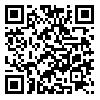Volume 25, Issue 3 (Avicenna Journal of Clinical Medicine-Autumn 2018)
Avicenna J Clin Med 2018, 25(3): 127-133 |
Back to browse issues page
1- Resident, Department of Dermatology, School of Medicine, Hamadan University of Medical Sciences, Hamadan, Iran , b.ebrahimi.4362@gmail.com
Abstract: (23550 Views)
Background and Objective: Vitiligo is a depigmantation disorder that depends on genetic and non-genetic factors and results from skin melanocytes malfunction. The aim of this study was to compare the effectiveness of narrow band Ultraviolet B (NBUVB) therapy combined with 0.1% topical tacrolimus and NBUVB monotherapy in vitiligo treatment.
Materials and Methods: In this double-blind clinical trial study, 30 patients with vitiligo who had at least two symmetrical lesions were selected (60 lesions in total). The patients were randomly divided into intervention and control groups. Phototherapy with 0.1% tacrolimus ointment and with eucerin ointment (placebo) was administered to the intervention and control groups, respectively. The size of the lesions and the degree of repigmentation were evaluated with photogram and Visual Approach Slope Indicator (VASI) scoring system, respectively, at the beginning of the treatment, 1.5 and three months after the treatment. The results were then recorded in checklists and the data were analyzed in SPSS software (version 16.0).
Results: The results of the study showed that the mean age of patients was 31.60 years with the prevalence of females (n=18, 60%). The mean and standard deviation of the size of vitiligo lesion in the intervention and control groups at the beginning of the treatment were 5.41 cm ±2.81 and 5.40 cm ±2.82, respectively. Moreover, the mean size of vitiligo lesion 1.5 and three months after the treatment lesion in the intervention and control groups were 4.96 cm ±2.84, 4.59 cm ±2.77, 3.85 cm ±2.35, and 4.66 cm ±2.80, respectively (P>0.05). The mean score of VASI in the intervention and control groups were 0.50 ±0.51 and 0.53 ±0.51 at the beginning of the treatment and 1.46 ± 1.44 and 1.13±1.01 after 1.5 months treatment and 2.18±1.57 and 1.52±1.21 after three months of treatment, respectively (P>0.05). Furthermore, the percentages of repigmentation in the intervention and control groups after 1.5 months were 18.25% and 14.12%, and three months were 30.63% and 19%, respectively.
Conclusion: The percentage of vitiligo recession in the combined treatment group was higher than that of monotherapy; however, no significant statistical difference was observed regarding the two therapeutic methods.
Materials and Methods: In this double-blind clinical trial study, 30 patients with vitiligo who had at least two symmetrical lesions were selected (60 lesions in total). The patients were randomly divided into intervention and control groups. Phototherapy with 0.1% tacrolimus ointment and with eucerin ointment (placebo) was administered to the intervention and control groups, respectively. The size of the lesions and the degree of repigmentation were evaluated with photogram and Visual Approach Slope Indicator (VASI) scoring system, respectively, at the beginning of the treatment, 1.5 and three months after the treatment. The results were then recorded in checklists and the data were analyzed in SPSS software (version 16.0).
Results: The results of the study showed that the mean age of patients was 31.60 years with the prevalence of females (n=18, 60%). The mean and standard deviation of the size of vitiligo lesion in the intervention and control groups at the beginning of the treatment were 5.41 cm ±2.81 and 5.40 cm ±2.82, respectively. Moreover, the mean size of vitiligo lesion 1.5 and three months after the treatment lesion in the intervention and control groups were 4.96 cm ±2.84, 4.59 cm ±2.77, 3.85 cm ±2.35, and 4.66 cm ±2.80, respectively (P>0.05). The mean score of VASI in the intervention and control groups were 0.50 ±0.51 and 0.53 ±0.51 at the beginning of the treatment and 1.46 ± 1.44 and 1.13±1.01 after 1.5 months treatment and 2.18±1.57 and 1.52±1.21 after three months of treatment, respectively (P>0.05). Furthermore, the percentages of repigmentation in the intervention and control groups after 1.5 months were 18.25% and 14.12%, and three months were 30.63% and 19%, respectively.
Conclusion: The percentage of vitiligo recession in the combined treatment group was higher than that of monotherapy; however, no significant statistical difference was observed regarding the two therapeutic methods.
Type of Study: Original |
Subject:
Other Clinical Specialties
| Rights and permissions | |
 |
This work is licensed under a Creative Commons Attribution-NonCommercial 4.0 International License. |




